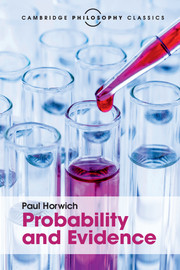Summary
My purpose in writing this essay was to exhibit a unified approach to philosophy of science, based on the concept of subjective probability. I hope to have contributed to the subject, first, by offering new treatments of several problems (for example the raven paradox, the nature of surprising data, and the supposed special evidential value of prediction over and above the accommodation of experimental results); and, second, by providing a more complete probabilistic account of scientific methods and assumptions than has been given before. In the interest of autonomy, I have included a chapter on probability which surveys the ideas that will be needed later, keeping technicalities to a minimum. Unfortunately, there was no room for a proper consideration of many alternative points of view; and a much longer treatise would be desirable in which the competition is adequately presented and criticised. Nevertheless, I do make something of a case for the probabilistic approach: it yields satisfying solutions to a wide range of problems in the philosophy of science.
This book is aimed at professional philosophers, but not exclusively; for I have covered a lot of ground, trying to explain everything from scratch, and so I hope that students will find here a useful introduction to the subject. Let no one be intimidated by the occasional intrusion of symbols. The formalism is intended to promote clarity; it is not difficult to master; and if worse comes to worst, those few sections may be skimmed without losing the general drift.
I would like to acknowledge the help and pleasure I have received from Hempel's Philosophy of Natural Science, from the work of Hacking and Kyburg on probability, and from Janina Hosiasson-Lindenbaum's brilliant early essay, ‘On Confirmation’ Also, I am very grateful to Frank Jackson, Thomas Kuhn and Dan Osherson who read an early draft and contributed many helpful suggestions. And I would especially like to thank my friends, Ned Block and Josh Cohen, for their excellent advice and steady encouragement.
- Type
- Chapter
- Information
- Probability and Evidence , pp. xi - xiiPublisher: Cambridge University PressPrint publication year: 2016

